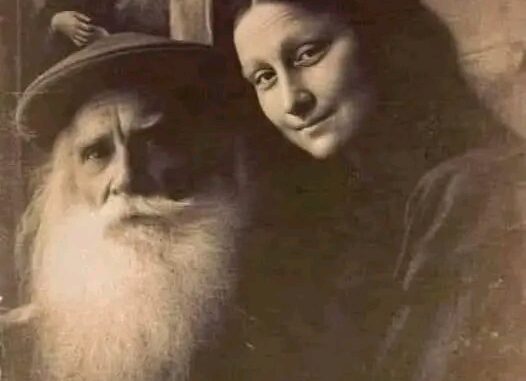
*Florence, Italy —* The enigmatic smile of La Mona Lisa remains one of the most celebrated and scrutinized images in art history, captivating millions worldwide for over five centuries. Recent scholarly research and advanced scientific analysis have once again reaffirmed the identity of the woman behind Leonardo da Vinci’s masterpiece, illuminating her humble origins and the enduring mystery that surrounds her.
**A Noble Florentine Woman**
Lisa di Antonio Maria Gherardini, born in Florence in 1479, was a member of the esteemed Gherardini family, a noble lineage rooted in Tuscany. Her life was largely ordinary; she married Francesco del Giocondo, a prosperous textile merchant, and together they had five children. Despite her noble background, Lisa’s life was typical of a Florentine woman of her social standing—focused on family, household duties, and societal expectations.
**The Artistic Commission**
In the early 16th century, around 1503-1506, Leonardo da Vinci was commissioned to paint Lisa’s portrait by her husband, Francesco. At the time, such commissions were customary, often intended to honor the wife or serve as a symbol of wealth and status. Leonardo, already renowned for his mastery of anatomy and portraiture, created a work that would transcend its initial purpose, capturing an elusive expression that has fascinated viewers for centuries.
**The Birth of a Global Icon**
Unknown to Leonardo’s patrons, the portrait would eventually become an unparalleled cultural phenomenon. After Leonardo’s death in 1519, the painting’s whereabouts remained largely mysterious, passing through various collections and owners. It was during the 19th century that the portrait gained widespread fame, particularly after being exhibited in the Louvre Museum in Paris.
The Mona Lisa’s fame skyrocketed with the theft of the painting in 1911, when it was stolen from the Louvre, only to be recovered two years later. This incident, coupled with the image’s widespread reproduction and parody, cemented its status as a symbol of artistic excellence and intrigue.
**Mystery of Her Smile and Identity**
One of the most captivating aspects of the Mona Lisa is her subtle, ambiguous smile—a feature that has prompted endless debate among art critics, psychologists, and historians. Leonardo’s masterful sfumato technique creates a soft gradation of tones, giving her expression an almost lifelike, mysterious quality.
For centuries, her true identity was the subject of speculation. Some believed she was a courtesan or a noblewoman, while others suggested the portrait was an idealized representation of femininity. It was only in recent decades that scientific advancements confirmed her identity as Lisa Gherardini.
**Scientific Confirmations and Modern Research**
In the early 21st century, a combination of historical documents, infrared imaging, and DNA analysis provided compelling evidence linking the portrait to Lisa Gherardini. Researchers examined Leonardo’s sketches and records, correlating them with her life and family history. Scientific tests revealed that the painting’s provenance aligns with the Gherardini family, and pigment analysis matched materials available in Florence during her lifetime.
These findings dispel lingering doubts about her identity, transforming her from an anonymous muse into a confirmed historical figure. Her story now offers a window into the life of a Florentine woman, whose modest existence became immortalized through the genius of Leonardo da Vinci.
**Cultural Impact and Continued Relevance**
Today, La Mona Lisa remains a symbol of artistic mastery, mystery, and cultural heritage. Her image has been reproduced, referenced, and reinterpreted across countless media, from literature to pop culture. The painting’s fame has contributed to the global perception of Florence as a cradle of Renaissance art and innovation.
Furthermore, her story underscores the power of art to elevate ordinary lives into legends. Lisa Gherardini’s portrait exemplifies how a simple commission can transcend time, transforming a woman’s fleeting existence into an eternal icon.
**Conclusion**
As scholars continue to explore her history, La Mona Lisa’s allure persists. Her identity as Lisa di Antonio Maria Gherardini, a noble Florentine wife, enriches her portrait with human depth and historical authenticity. Leonardo da Vinci’s masterpiece not only showcases artistic brilliance but also encapsulates the timeless human fascination with identity, beauty, and mystery.
In an age where digital images dominate, the Mona Lisa’s smile endures as a testament to the enduring power of art to inspire, mystify, and connect generations—a true cultural treasure that will continue to captivate hearts and minds for centuries to come.
Leave a Reply